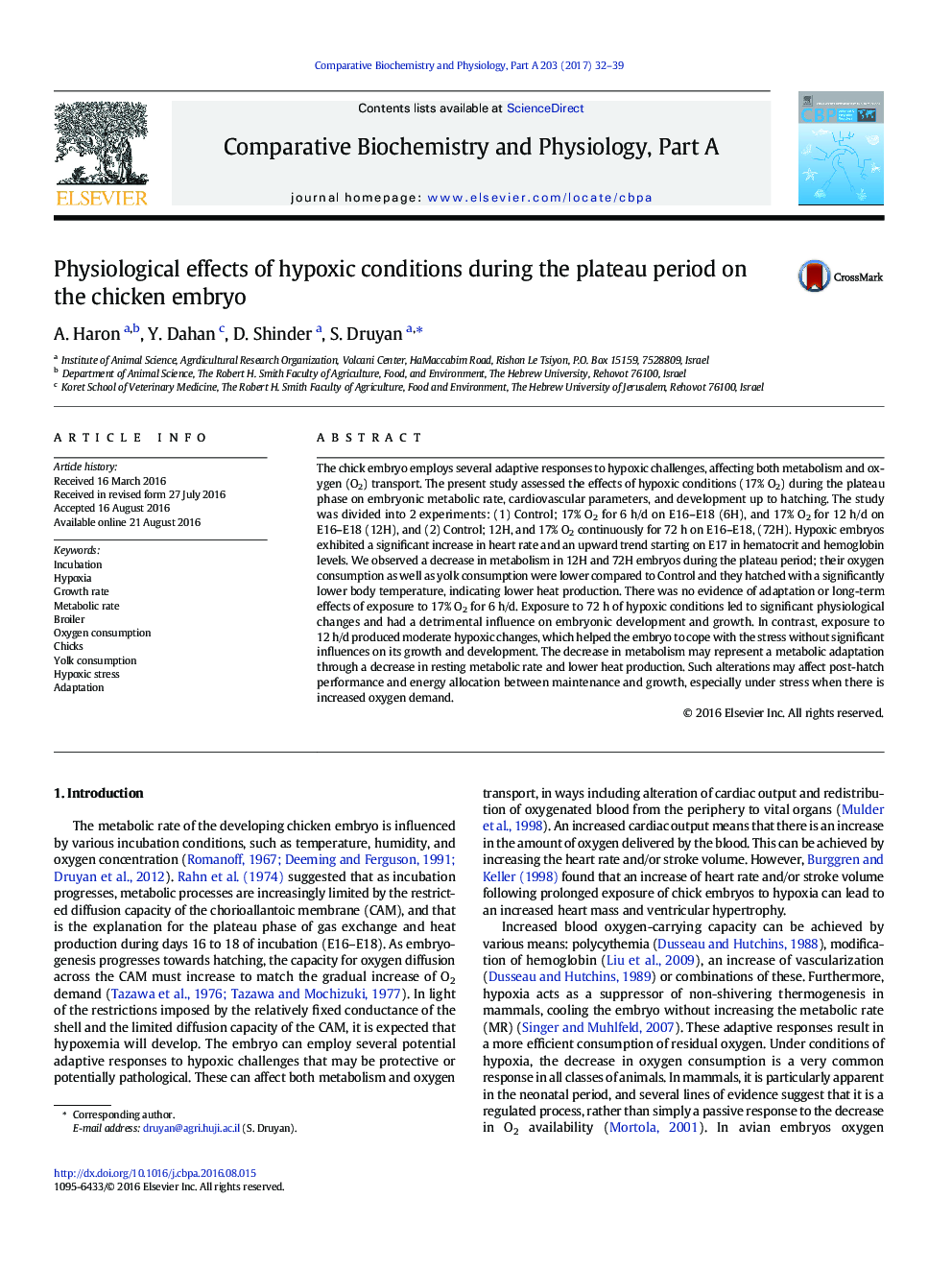| Article ID | Journal | Published Year | Pages | File Type |
|---|---|---|---|---|
| 1971790 | Comparative Biochemistry and Physiology Part A: Molecular & Integrative Physiology | 2017 | 8 Pages |
The chick embryo employs several adaptive responses to hypoxic challenges, affecting both metabolism and oxygen (O2) transport. The present study assessed the effects of hypoxic conditions (17% O2) during the plateau phase on embryonic metabolic rate, cardiovascular parameters, and development up to hatching. The study was divided into 2 experiments: (1) Control; 17% O2 for 6 h/d on E16–E18 (6H), and 17% O2 for 12 h/d on E16–E18 (12H), and (2) Control; 12H, and 17% O2 continuously for 72 h on E16–E18, (72H). Hypoxic embryos exhibited a significant increase in heart rate and an upward trend starting on E17 in hematocrit and hemoglobin levels. We observed a decrease in metabolism in 12H and 72H embryos during the plateau period; their oxygen consumption as well as yolk consumption were lower compared to Control and they hatched with a significantly lower body temperature, indicating lower heat production. There was no evidence of adaptation or long-term effects of exposure to 17% O2 for 6 h/d. Exposure to 72 h of hypoxic conditions led to significant physiological changes and had a detrimental influence on embryonic development and growth. In contrast, exposure to 12 h/d produced moderate hypoxic changes, which helped the embryo to cope with the stress without significant influences on its growth and development. The decrease in metabolism may represent a metabolic adaptation through a decrease in resting metabolic rate and lower heat production. Such alterations may affect post-hatch performance and energy allocation between maintenance and growth, especially under stress when there is increased oxygen demand.
